Lighthouse Series – Florida’s Atlantic Coast
Florida Lighthouses
There are 29 lighthouses that line the coast of Florida, from the Amelia Island Lighthouse in the North down the Atlantic Coast to Key West at the Southern Tip of Florida and up the Gulf Coast to Pensacola. Of the 29 lighthouses in Florida, only 6 are open to the public. Florida has many historic lighthouses. The first lighthouse built was at Key West in 1825. The oldest existing lighthouse in Florida is Amelia Island Lighthouse it was built in 1839.
Florida lighthouse History
When the United States took possession of Florida in 1821, no lighthouses existed. Florida had become the nation’s busiest highway for commerce. The Appalachian Mountains made it impossible for produce from the Nation’s farmland to reach the cities on the East Coast. The produce had to be shipped by sea. Timber, grain, and livestock were floated down the western rivers(including the mighty Mississippi) in flatboats to New Orleans. From there, the products were loaded onto sailing vessels bound for the Atlantic coast or to Europe. The voyage took ships around the southern tip of Florida, which was very treacherous, many ships, cargoes, and lives were lost.
Clearly, something had to be done to warn ships away from Florida’s dangerous shoals and headlands. The first lighthouse built was to mark the Florida Keys. In 1825 a 65-foot brick lighthouse was built at Key West. By 1826, four other lighthouses were built at; Garden Key, Sand Key, Cape Florida, and the Dry Tortugas. In the next few decades, lighthouses were built at the mouth of the St. Johns River. Amelia Island, Cape Canaveral, and Jupiter Inlet. The new lighthouses made navigation safer and reduced the number of shipwrecks.
NOTE: There may be some evidence that the Spanish may have built the first lighthouse in Florida. Shortly after the U.S. acquired Florida in 1821, they sent a team of inspectors to examine an old and mysterious tower near St. Augustine. The inspectors believed that the Spanish may have used the three-story structure as a lighthouse. Since St. Augustine was a leading port, Congress wanted a navigational light established there. Using the old Spanish tower, the officials ordered a lantern be placed atop the third story as a temporary light for mariners. But, after further inspection, they declared the structure unstable and decided it must have been a watchtower and not a lighthouse.
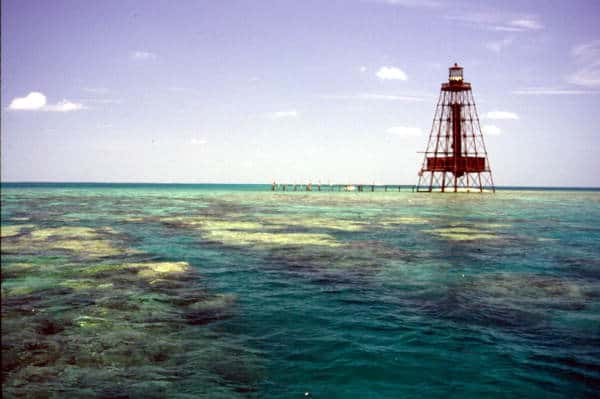
Lighthouses of Florida’s Atlantic Coast
- Amelia Island Light
- St Johns River Light
- St Johns Light
- St Augustine Light
- Ponce de Leon Inlet Light
- Cape Canaveral Light
- Jupiter Inlet Light
- Hillsboro Inlet Light
- Cape Florida Light
Amelia Island Light
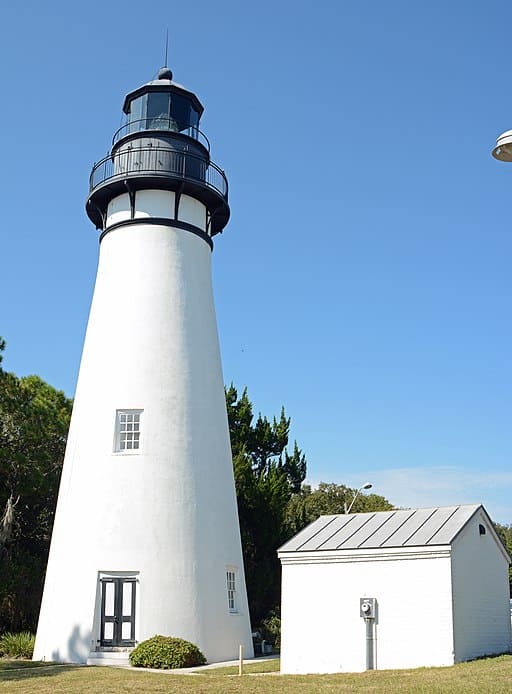
In 1820, a 50-foot tower was built on Georgia’s Cumberland Island. It marked the mouth of the St. Mary’s River, which forms a natural border between Georgia and Florida. Following the annexation of Florida as a US territory, the officials decided the lighthouse would provide better service on the south bank of the river. It was dismantled and moved to Amelia Island. The height was increased by 14 ft. to become the 64-foot lighthouse seen today. The 68 step staircase is unusual, it was made of granite which was shipped from New England. The lighthouse has been renovated twice. It stands 2 miles from the north end of the island and 1 mile from the town of Fernandina. It is still in use today!
Access: The lighthouse is located in a residential section of town and is closed to the public. You will find an excellent view of the lighthouse from Atlantic Avenue!
St. Johns River Light

St Johns River is one of the busiest and most historic waterways in our country. The river has served as a sanctuary for seafarers for more than 400 years! French explorer, Jean Ribault established a small colony near the mouth of the river in 1565. This colony was replaced by the Spanish, who build a mission here called San Juan del Puerto(St. John of the Harbor). The first navigational light was simply an oil lamp hung on a pole.
The first official lighthouse was built in 1830, fifteen years before Florida became a state. It lasted more than five years, but surging tide currents destroyed the foundation, and it was torn down in 1835. The same year a second lighthouse was built upriver from the original lighthouse, but by the 1850s, this lighthouse too would have to be replaced.! The river’s third lighthouse was completed in 1858. It was a 66-feet tall brick tower. Like so many lighthouses on the East Coast, this lighthouse was damaged by Confederate soldiers during the Civil War. After the war, in 1887, the damage was repaired and 15 feet were added to the tower making the current tower 81 feet tall. It served this area until 1929.
Access: The lighthouse is located on the Mayport Naval Air States and is closed to the public. However, it can be viewed from nearby streets on the base.
St. Johns Light
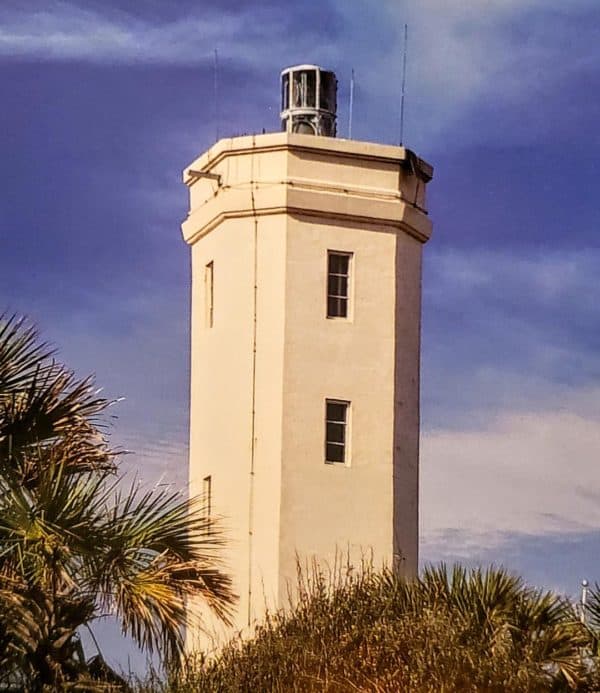
This is one of the most unusual lighthouses in the United States. The typical light tower is cylinder-shaped and made of stone, brick, or steel. Not this one! It was built with concrete blocks and has an angular, modern appearance. It is one of the more recently constructed U.S. lighthouses. It was built in 1954, is 64 feet tall, and has no lantern room. Instead, it has antennas, electronic gear, and a revolving aerodrome beacon(like you would see on a control tower at the airport).
Access: The Lighthouse is located on the naval base at Mayport FL, and is closed to the public. The lighthouse can be seen on the naval compound. Visitors are allowed on the base during the day.
St. Augustine Light
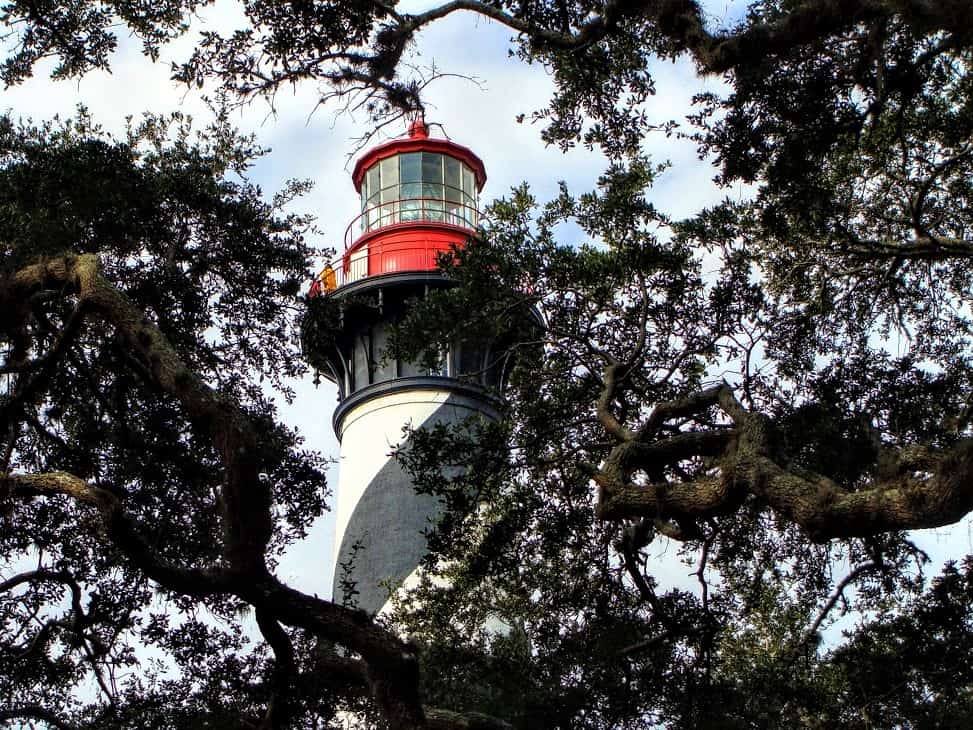
The first Lighthouse was built in 1824. It was built from brick and was 73 feet tall. It marked the entrance to the St. Augustine harbor. Like most of Florida’s lights, the St. Augustine Lighthouse came under assault from Confederate soldiers during the Civil War. After the war, the lantern was replaced and relit, but the sea was causing erosion and came within 48 feet of the foundation. The Lighthouse Board decided to build a new tower on a more secure location about a half-mile away on Anastasia Island. It was finally completed in 1874. The lighthouse is 165 feet above sea level and has 219 steps. It was painted with barber pole stripes to make it easier to identify during the day. The original Lightkeepers house has been restored and opened as a museum.
Access: This is one of a few lighthouses located in a populated area. From downtown St. Augustine, take the bridge toward St. Augustine Beach. The GPS address is 100 Red Cox Dr., St. Augustine FL. The lighthouse is open daily 9:00 am – 6:00 pm. Your admission ticket gets you into the lighthouse and maritime museum.
Ponce de Leon Inlet Light
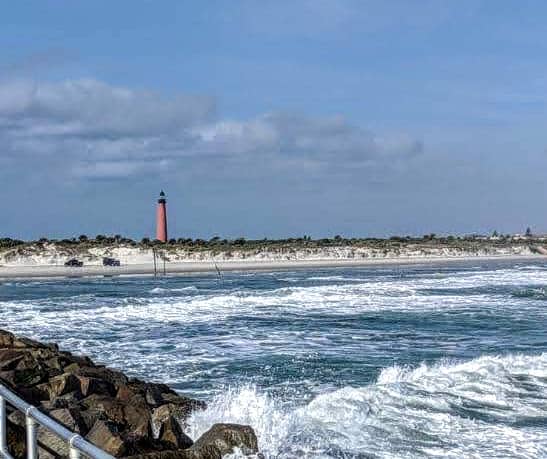
The first lighthouse built at Ponce de Leon Inlet collapsed before it could ever be lit! A storm weakened the tower’s foundation and hostile Seminoles prevented the workmen from protecting the tower from further damage and it toppled over. It was nearly fifty years later before a new lighthouse was built. It was built with brick shipped south from Baltimore, MD. The tower is 168 feet tall which makes it the second tallest lighthouse on the East Coast. It was completed and lit in 1887. The lightkeeper had to carry oil by hand to the lantern room which was 203 spiraling steps from the ground! Kerosene later replaced oil as a fuel. The lighthouse is still operating today.
Access: The lighthouse is located 10 miles south of Daytona on South Peninsula Drive, Ponce Inlet, FL. The Ponce Inlet Lighthouse and Museum are open 7 days a week, regular hours are 10:00 am to 6:00 pm.
**If you would like to receive our Newsletters in your inbox, please subscribe here and receive a free printable, “My Bucket List”**
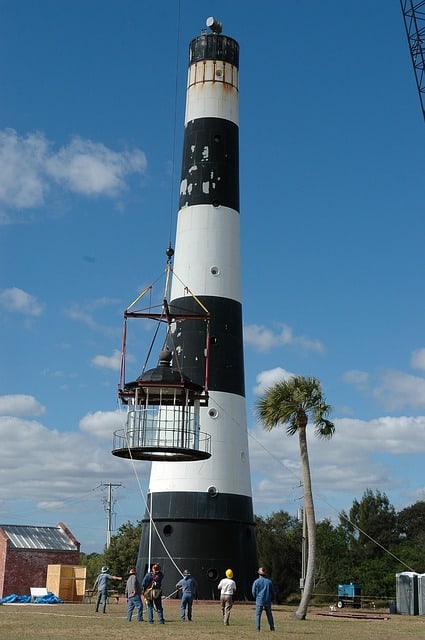
In 1848, the government built this lighthouse to warn ships away from the dangerous shoals that extended for miles to the east of Cape Canaveral. The brick tower that was built was only 65 feet tall and the light was so weak that mariners were already on the shoals before they could see it! In 1859, the Lighthouse Board approved the construction of a second, much taller tower but the construction was stopped by the Civil War. At the end of the war, construction continued and the new tower was completed by 1868. it stood 139 feet above sea level and could be seen from 18 miles at sea. Like many lighthouses built on the sands of the south Atlantic coast, the second tower was soon threatened by erosion. In 1893, the structure had to be dismantled and rebuilt more than a mile west of the original location. It’s still in operation today.
Access: The lighthouse is located on the Cape Canaveral Air Force base. You must obtain clearance to tour the lighthouse through Canaveral Tours or KSC Visitor Center. Advance reservations are required. The lighthouse can be climbed inside to the 3rd floor and then you must exit using the outside staircase. You can also take a tour that includes; the spaceflight complexes, museums, and launch complexes.
Jupiter Inlet Light
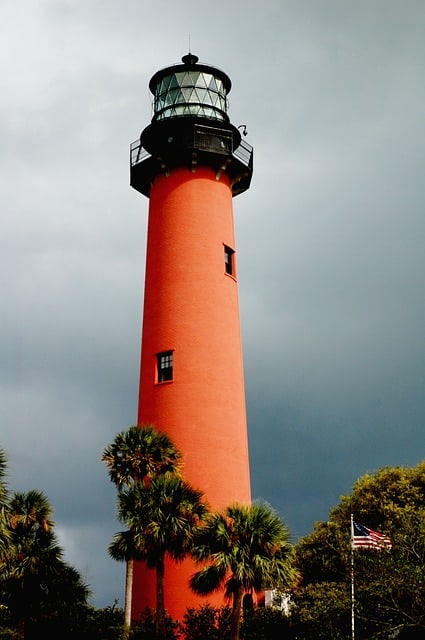
The Jupiter Inlet Lighthouse was completed and lit in 1860. It burned for a little over one year before Confederate raiders stole and hid the Fresnel lens. At the end of the Civil War, Captain James Armour found the lens buried in Jupiter creek. He had it reinstalled and working by the end of 1866. He became the Jupiter Inlet Lighthouse keeper and remained for forty years!
Access: Located at 500 Captain Armour’s Way in Jupiter. The lighthouse is in a fenced area on the restricted property, access is by paid admission only. The admission desk is within the museum gift shop. It’s 105 steps to the top!
Hillsboro Inlet Light

This lighthouse was not built in Florida. It was built in the Midwest by a Chicago company and shipped down the Mississippi River to St. Louis for the 1904 Exposition. When the Expo. closed, the lighthouse seemed very out of place. Eventually, it was purchased by the Government and moved to Hillsboro Inlet where it became a navigational light in 1907. It was the last beach lighthouse erected in Florida. At first, the light was fueled by kerosene which had to be carried by the keeper up the 175 steps to the lantern room. It was converted to electric power in the 1920s.
Access: The lighthouse is still in operation and maintained by the Coast Guard. It is closed to the public but can be seen from the State Hwy A1A bridge over the inlet.
Cape Florida Light
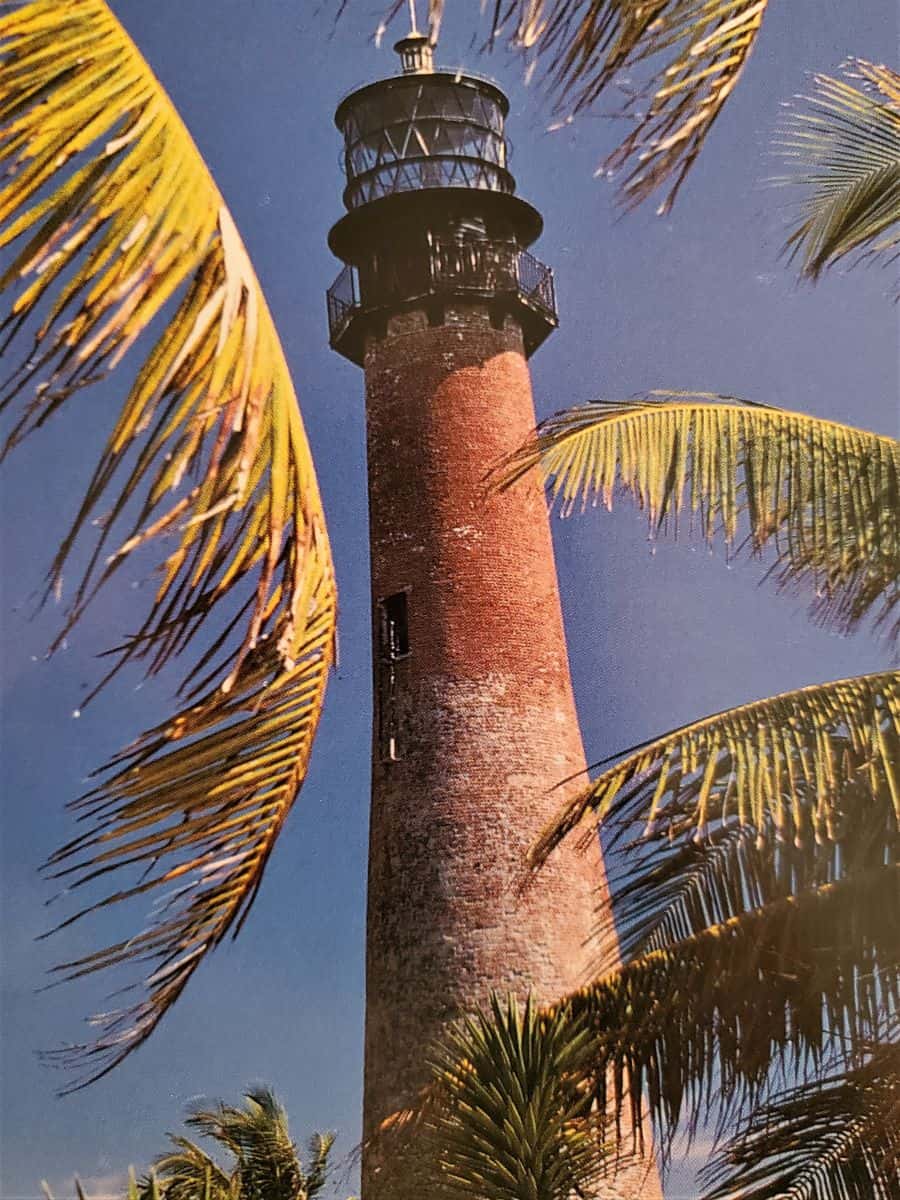
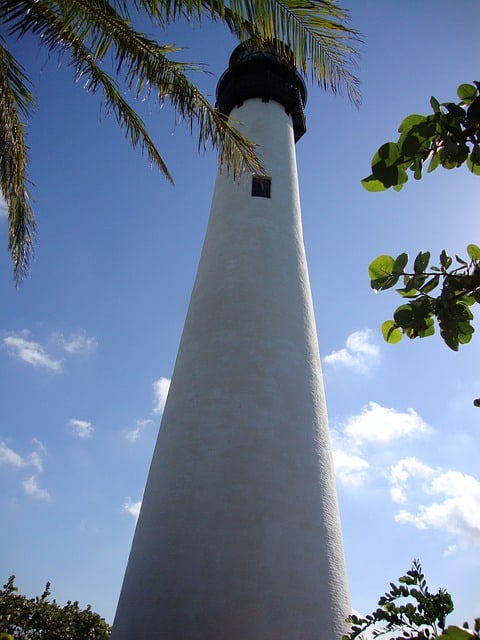
The first tower, which was built in 1825, stood 65 feet tall and was located at the northern entrance to Biscayne Bay. The brick tower had walls 5 feet thick! It guided mariners off the Florida Reef. It was operated until 1878 when it was replaced with the Fowey Rocks Lighthouse. It wasn’t put back into service until 100 years later in 1978. The Coast Guard wanted to mark the Florida Channel. It was decommissioned in 1990 and then relit in 1996 for the Miami Centennial celebration. The lighthouse has been completely refurbished and painted white.
Access: The Lighthouse is located just a few miles from downtown Miami at Bill Baggs State Recreation Area. There is a toll fee to get onto the island and an admission charge to the recreation area.
In Conclusion..
Florida is a beautiful state! One of my favorites! Have you seen any of these lighthouses in person? Do you have a favorite lighthouse? I would love to hear from you, please comment below. Remember to share on social media and PIN for later!
**Please subscribe here to receive our weekly Newsletters and come along on our adventures!**
You may also enjoy reading: The Lighthouses of the Outer Banks and Wisconsin Lighthouses


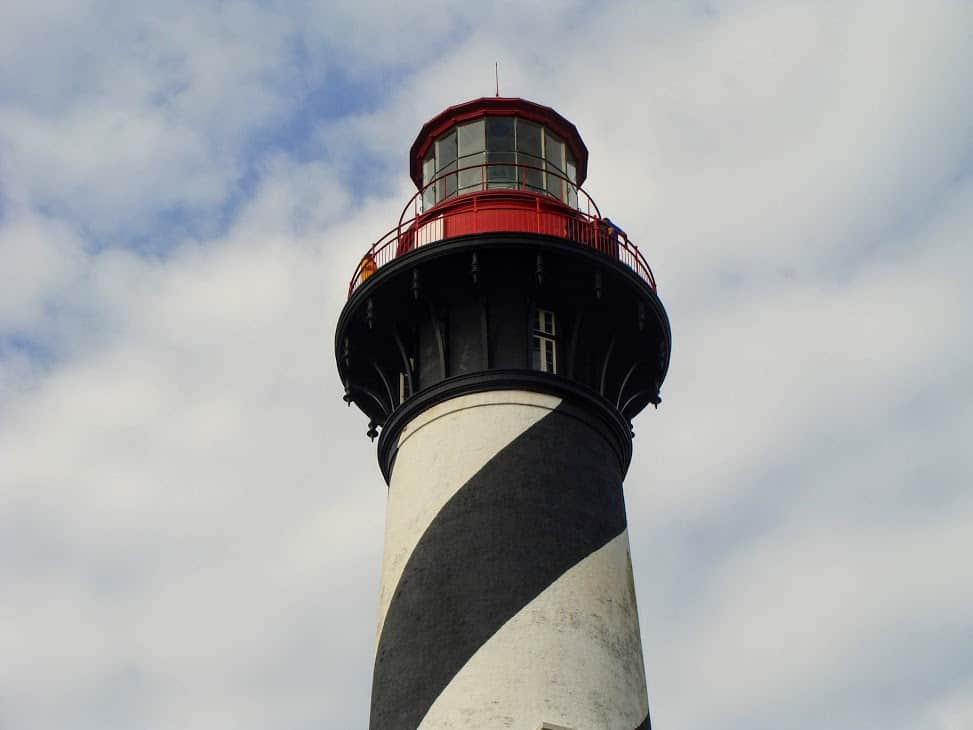
I love lighthouses. Great post. Maybe one day I will tour these in Florida.
I haven’t seen them all…but I do love lighthouses!
I love lighthouses. I love the history of Florida lighthouses too. These like all others are so unique and yet so beautiful. I would love to take a road trip through Florida to visit all of these.
I wish I could see them all too! Thanks for reading!